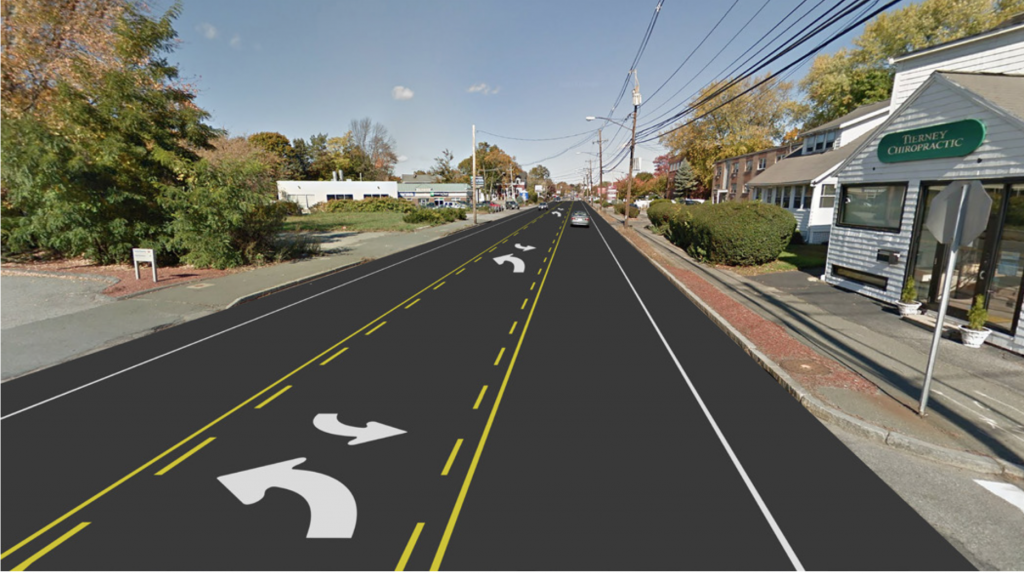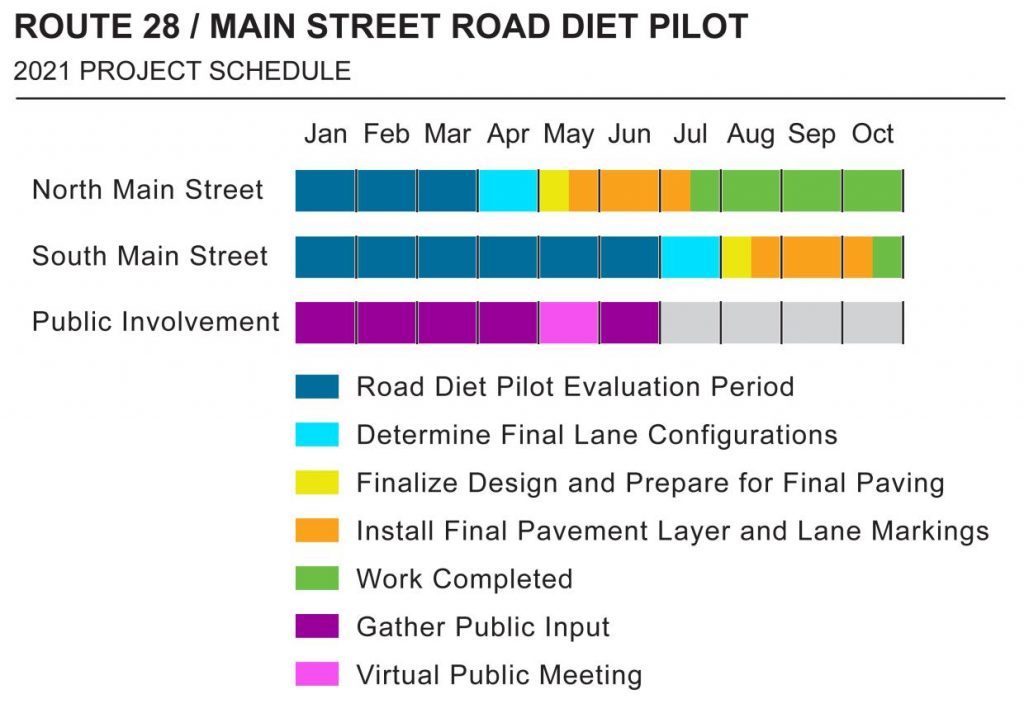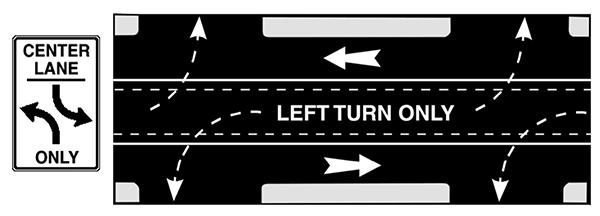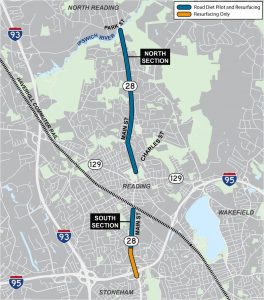Project Goals: Maintaining the Roadway, Improving Safety, Calming traffic, Improved Access for Pedestrians

Reading, MA — In anticipation of completing the Route 28 repaving project, the Massachusetts Department of Transportation (MassDOT) team managing the project updated interested residents in a virtual public meeting on May 11. Andrew Paul from MassDOT re-shared the purposes behind the resurfacing project and the road diet pilot project.
Paul reported that in the three years prior to the project, the crash rate on the Reading portion of Route 28 was more than double that of similar corridors in the state. He continued to share the project goals of maintaining the roadway, improving safety, calming traffic, improved access for pedestrians, and meeting MassDOT “Complete Streets” strategies. He explained that COVID has adjusted the project schedule, extending the pilot project, but that the final layer of pavement will soon be placed on both sections of the project.
Paul announced that structures on North Main Street will be adjusted during May and June and that the final 1.5-inch layer of pavement with line painting will occur in July. Paul also said that the line painting on North Main Street will be as it is now, with only minor adjustments. National Grid will be making repairs to gas lines in a 2,100-foot section of the road in the future as well.
The pilot road diet project will continue to gather data on South Main Street through July, with final decisions being made at that time regarding the placement of line painting. Structures will be prepared and adjusted in August, with the final 1.5-inch layer of pavement and line painting to occur in September.

MassDOT has received over 340 comments and suggestions regarding the road diet, and Paul described adjustments that have been made as a result, especially in places such as Bagel World, Birch Meadow Drive, and Forest Street. Most comments were made between April and June of 2020. Paul explained that despite the change in lanes, average speeds in the corridor have remained constant, despite rising in other places during the pandemic. He also stated that travel times through the area have been consistent as well.
“Converting from four lanes to three lanes has been shown to reduce the number of crashes and the severity of those crashes in a range of 19% to 40%,” Paul reported. “They have been shown to be a proven countermeasure.”

Several residents posed questions and concerns to the team. These ranged from suggestions regarding specific locations such as the intersection of Franklin Street and Main Street to the inclusion of bike lanes and the continued use of cameras to monitor traffic patterns. Paul shared that input is still being sought on all of these. He also suggested that MassDOT will continue to monitor safety, speed, and crash data as it is available and strive to make improvements into the future.
“We want to make sure this regionally important roadway is not impeding commerce and transportation,” Paul affirmed.
Interested residents can find out more about the project and its progress at mass.gov/route-28-in-reading-resurfacing-and-road-diet-pilot.

